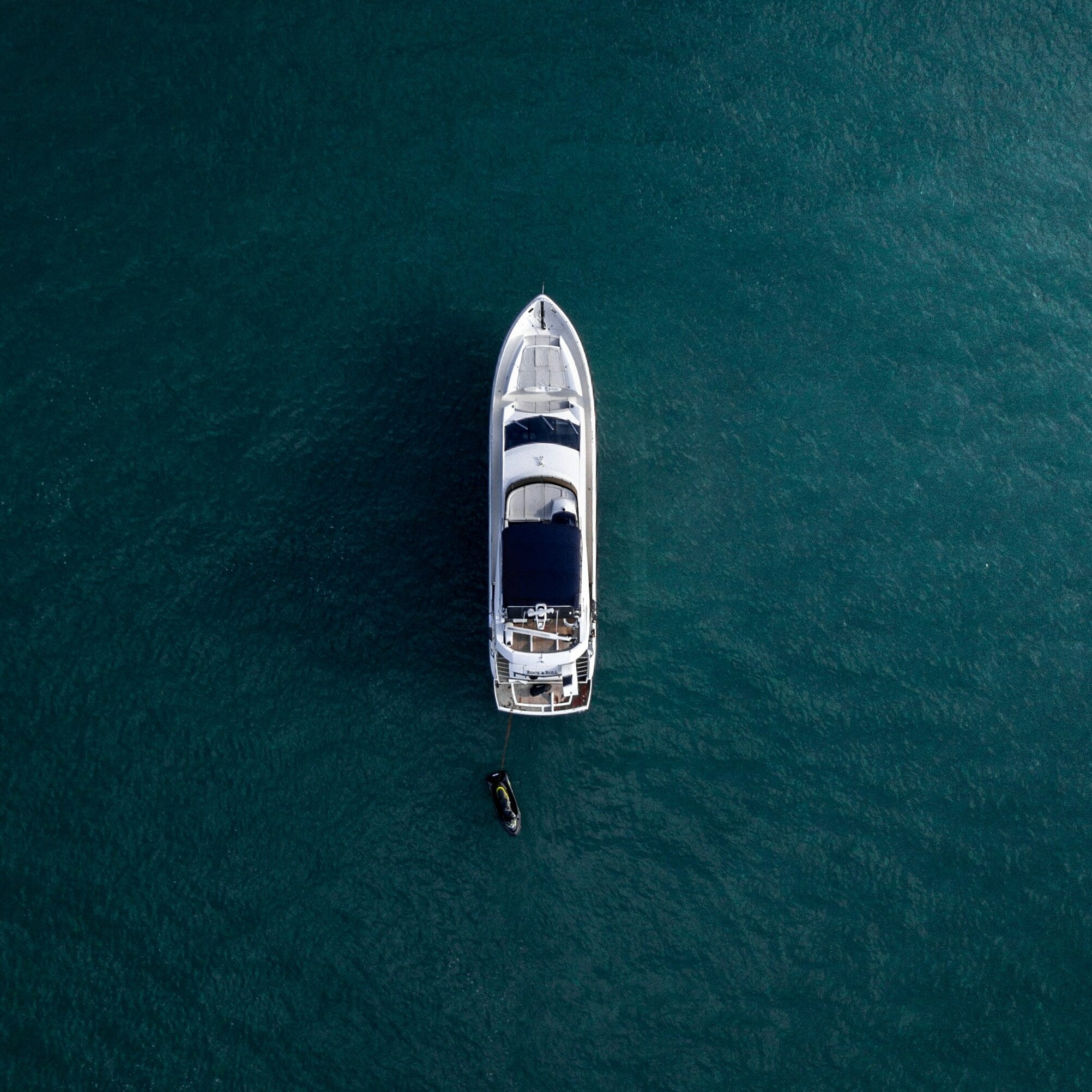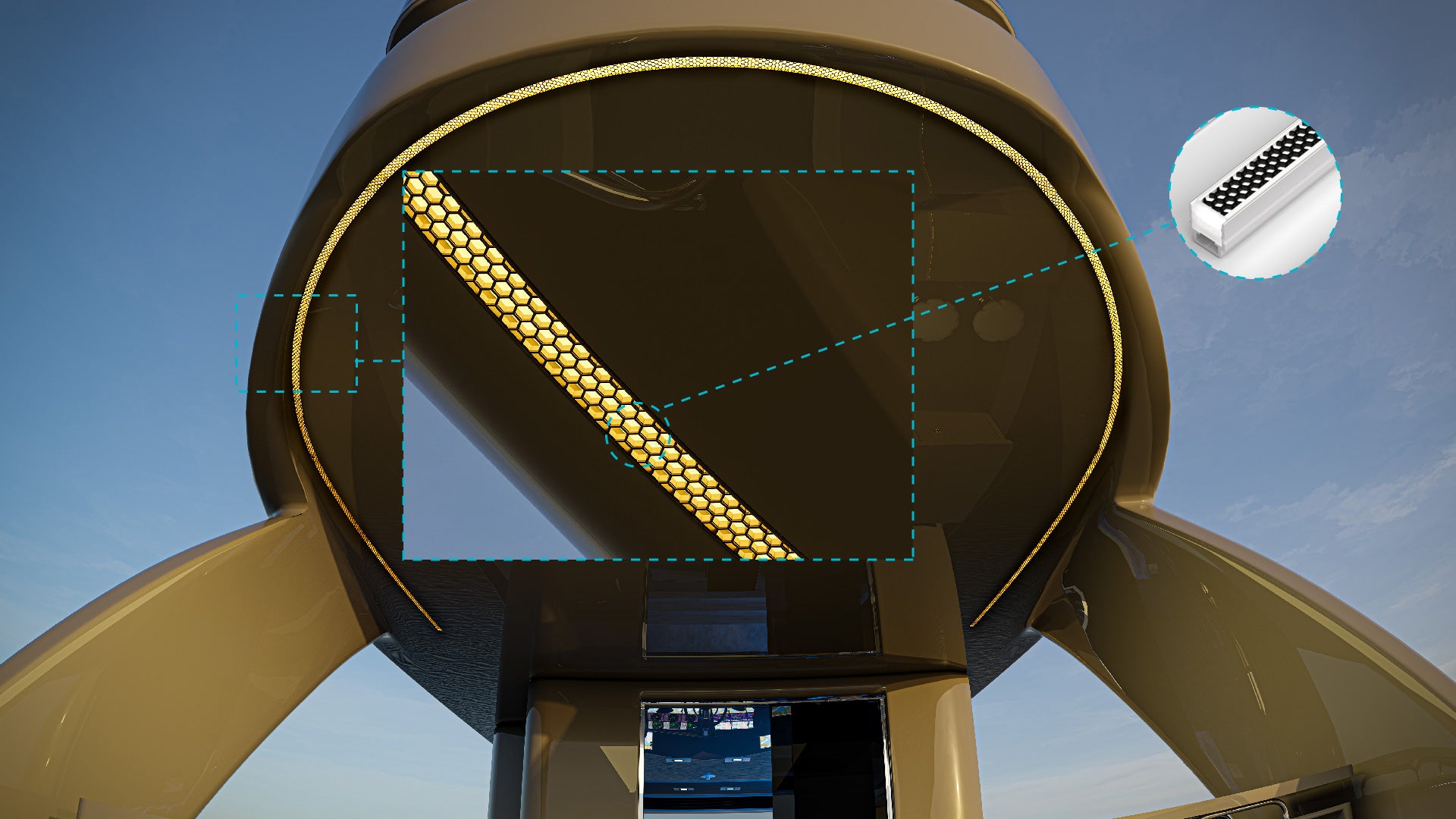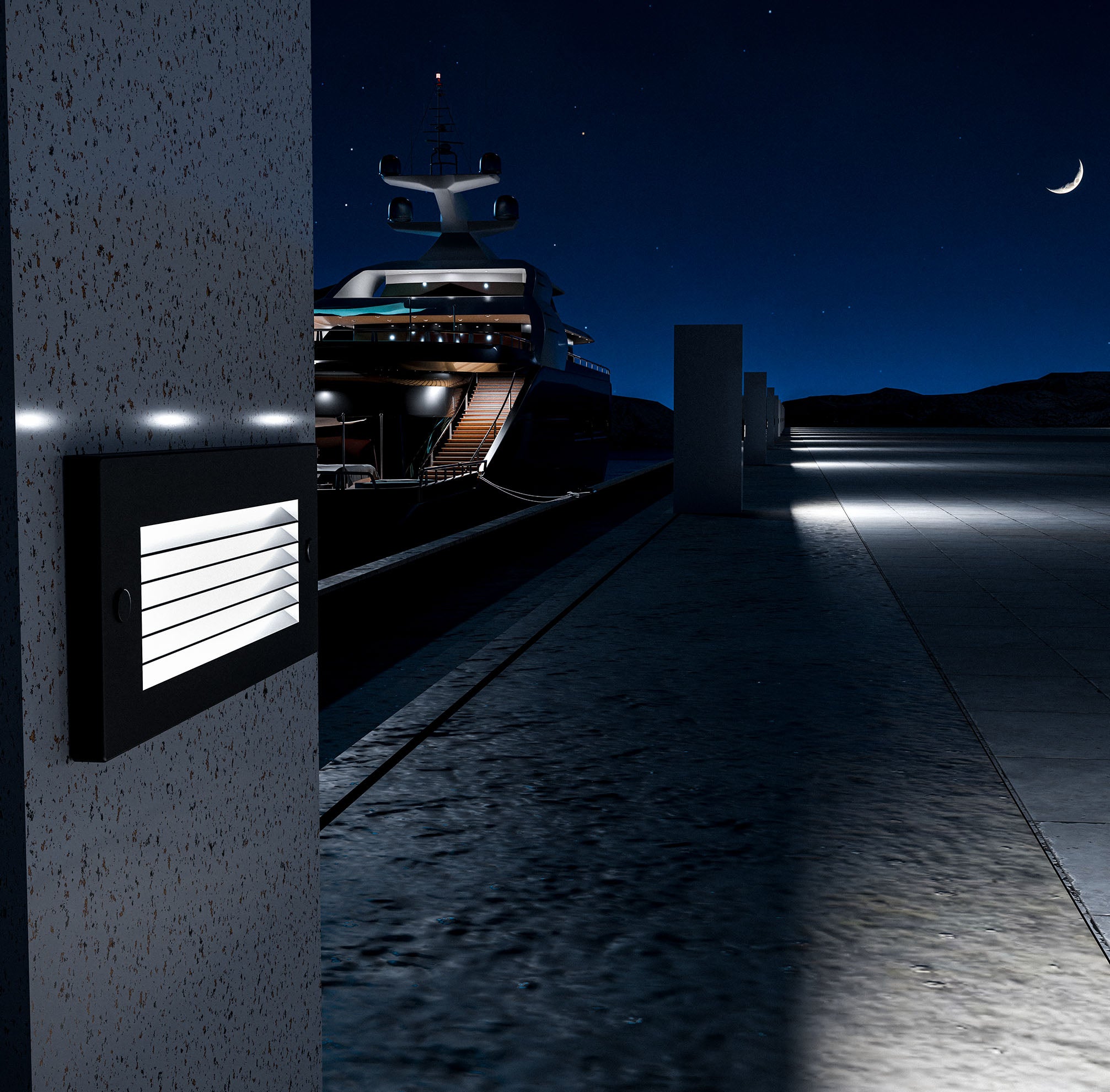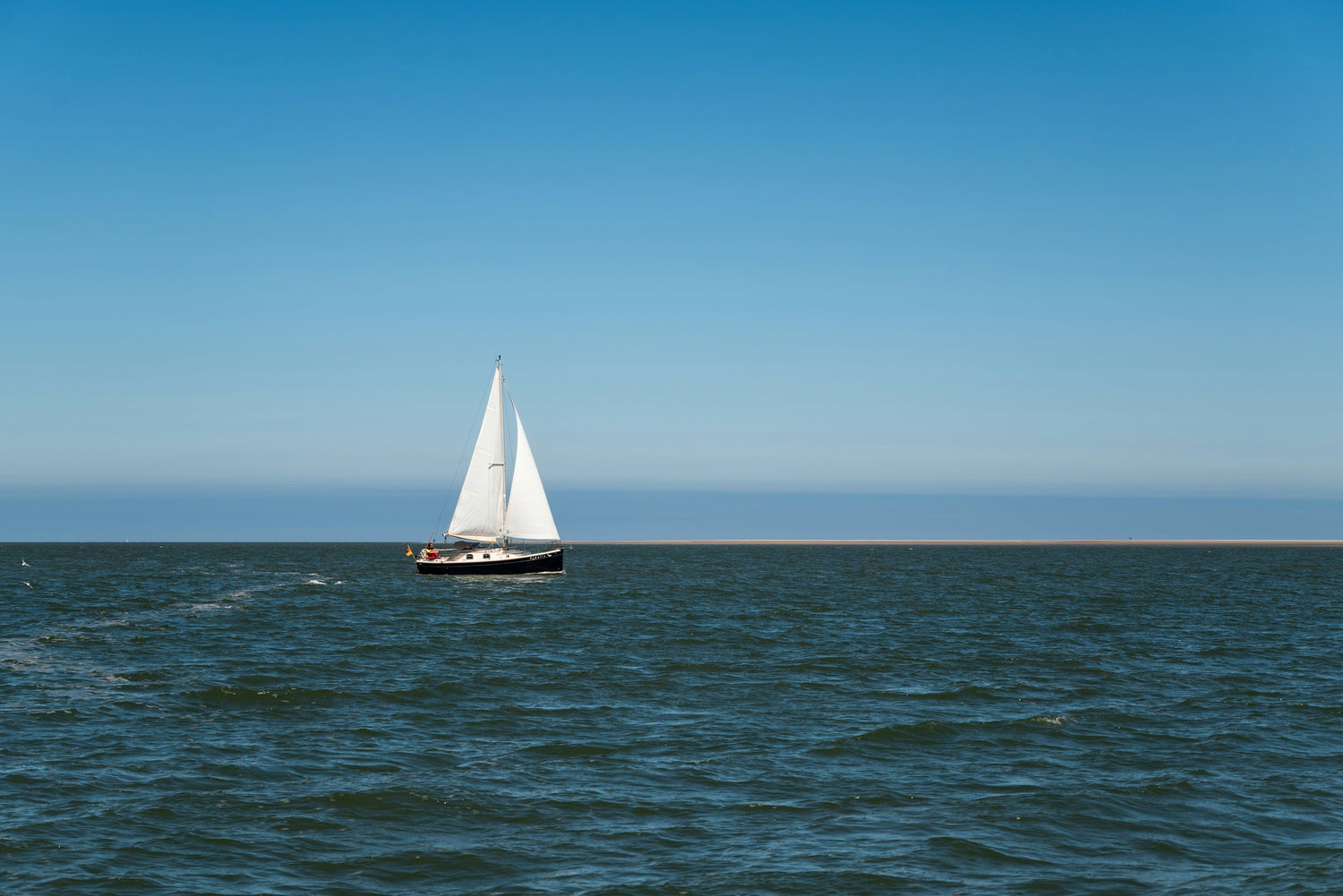Light is the invisible architect of ocean life, shaping everything from microscopic plankton behavior to the hunting patterns of massive whales. While we often think of the ocean as a dark, mysterious realm, the reality is far more complex and fascinating. The interplay between light and marine life creates some of nature's most remarkable adaptations and drives the fundamental processes that sustain all ocean ecosystems.
Understanding how light affects marine life isn't just academic curiosity—it's crucial for marine conservation, sustainable fishing practices, and even lighting design that minimizes our impact on coastal ecosystems. As human activities increasingly influence marine environments, the relationship between light and ocean life becomes more critical than ever.
The Ocean's Light Architecture: Understanding Marine Light Zones
The ocean's relationship with light creates distinct vertical zones, each supporting unique communities of life adapted to specific lighting conditions. Unlike terrestrial environments where light transitions gradually from day to night, the ocean creates permanent light gradients that have shaped millions of years of evolution.
The Sunlight Zone: Where Life Flourishes
The epipelagic zone, extending from the surface to approximately 200 meters deep, receives abundant sunlight that powers the ocean's entire food web. Here, light penetration allows photosynthesis to occur, making this zone the ocean's primary production powerhouse. The quality of light changes dramatically even within this zone—red light disappears within the first 10 meters, orange by 25 meters, and yellow by 50 meters, leaving primarily blue and green wavelengths to penetrate deeper.
This selective light filtering has profound implications for marine life. Many fish in this zone have evolved enhanced sensitivity to blue-green light, while others use the remaining red wavelengths for private communication—appearing black to predators but visible to their own species. The abundance of light in this zone supports not only microscopic phytoplankton but also larger marine plants like kelp forests and seagrass beds, which create complex three-dimensional habitats supporting diverse communities.
The Twilight Zone: Adaptation in Perpetual Dusk
Between 200 and 1,000 meters lies the mesopelagic or twilight zone, where only 1% of surface light penetrates. This region represents one of Earth's largest habitats, containing more fish biomass than all other ocean zones combined. The dim lighting conditions have created extraordinary adaptations—many species here have enlarged eyes to capture every available photon, while others have developed highly sensitive visual systems that can detect bioluminescent signals from great distances.
The twilight zone serves as a crucial link between surface productivity and deep-sea ecosystems. Many species undertake daily vertical migrations, rising to feed in the productive surface waters at night and descending to the safety of darker depths during the day. This massive movement of biomass, visible on sonar as the "deep scattering layer," represents one of the largest animal migrations on Earth and occurs twice daily across the world's oceans.
The Midnight Zone and Beyond: Life in Eternal Darkness
Below 1,000 meters, sunlight never penetrates, creating an environment of perpetual darkness broken only by the ethereal glow of bioluminescent organisms. In this alien world, light becomes a precious resource created by life itself. The absence of natural light has led to some of the most extreme adaptations on Earth—from fish with transparent heads to creatures that generate their own illumination through complex biochemical processes.
Light as the Foundation of Marine Food Webs
The relationship between light and marine primary production forms the foundation of all ocean life. Phytoplankton, microscopic marine plants that drift in the upper ocean, convert sunlight and carbon dioxide into organic matter through photosynthesis. These tiny organisms produce approximately 50% of the world's oxygen and form the base of virtually every marine food chain.
The efficiency of this light-driven process varies dramatically with seasons, latitude, and water conditions. In polar regions, the extreme seasonal variation in daylight creates boom-and-bust cycles of productivity that drive massive wildlife migrations. Arctic waters experience months of continuous daylight followed by months of darkness, creating one of the most dramatic examples of how light cycles affect marine ecosystems.
Phytoplankton have evolved sophisticated mechanisms to optimize light capture in different conditions. Some species can adjust their buoyancy to position themselves at optimal light levels, while others change their pigment composition to better capture available wavelengths. During algal blooms, these organisms can become so abundant that they visibly change the ocean's color from space, demonstrating the massive scale of light-driven biological processes.
Marine plants like seagrasses and kelp forests represent the ocean's "underwater rainforests," creating complex three-dimensional habitats that support incredible biodiversity. These ecosystems depend entirely on light penetration and are therefore restricted to relatively shallow coastal waters. Understanding optimal lighting conditions becomes crucial for marine habitat restoration and aquaculture operations that seek to recreate these productive environments.
Behavioral Symphonies: How Light Orchestrates Marine Life
Light serves as the conductor of elaborate behavioral symphonies performed daily across the world's oceans. The most spectacular of these is diel vertical migration, where billions of marine animals rise toward the surface each night to feed and descend to deeper waters at dawn. This phenomenon occurs in every ocean and involves organisms from tiny copepods to large fish and squid.
The triggers for this migration are remarkably precise. Many species respond to specific light thresholds, beginning their ascent when surface light levels drop to predetermined intensities. Some animals migrate hundreds of meters twice daily, expending significant energy but gaining access to rich feeding opportunities in surface waters while avoiding visual predators during daylight hours. This behavior creates a biological escalator that transports nutrients and energy between ocean layers, connecting surface productivity to deep-sea ecosystems.
Feeding behaviors throughout the ocean are intricately tied to light availability and quality. Many predatory fish time their hunting to coincide with dawn and dusk, when the changing light conditions give them advantages over their prey. Some species have evolved to exploit specific lighting conditions—for example, certain sharks hunt most effectively in the dim light of early morning when their prey's vision is compromised but their own enhanced visual systems provide clear advantages.
Reproductive behaviors in marine animals often depend on light cues for timing and coordination. Many coral species release their eggs and sperm simultaneously during specific lunar phases, using moonlight intensity to synchronize reproduction across entire reef systems. Fish species from temperate regions often time their spawning to coincide with increasing day length in spring, ensuring their offspring develop during optimal feeding conditions.
The precision of these light-mediated behaviors demonstrates how finely tuned marine organisms are to their luminous environment. Even small changes in natural lighting patterns can disrupt these ancient rhythms, with consequences that ripple through entire ecosystems.
Physiological Marvels: How Marine Life Adapts to Light
The physiological adaptations of marine organisms to different light environments represent some of evolution's most creative solutions. Vision systems in marine animals show extraordinary diversity, from the compound eyes of mantis shrimp that can detect polarized light and see colors invisible to humans, to the tubular eyes of barreleye fish that can rotate within their transparent heads to track bioluminescent prey above.
Deep-sea fish often possess eyes that are proportionally much larger than their surface-dwelling relatives, maximizing their ability to collect scarce photons. Some species have developed tapetum lucidum—reflective layers behind their retinas that bounce light back through light-sensitive cells, effectively giving them night vision capabilities that would make any nocturnal mammal envious. Conversely, many cave-dwelling and deep-sea species have completely lost their vision, redirecting the energy that would have been spent on eye development toward enhanced chemical and mechanical senses.
Circadian rhythms in marine organisms demonstrate remarkable adaptations to the ocean's light environment. While humans and most terrestrial animals follow roughly 24-hour cycles, some marine organisms have evolved circadian rhythms that match tidal cycles, lunar phases, or seasonal changes in day length. Deep-sea organisms present particular puzzles—some maintain circadian rhythms despite never experiencing natural light cycles, possibly using temperature variations, pressure changes, or chemical cues to maintain their internal clocks.
The molecular machinery of these adaptations involves sophisticated light-sensing proteins that can detect incredibly weak light signals. Some deep-sea organisms can sense light levels equivalent to a few photons, allowing them to detect the silhouettes of prey or predators against the faint downwelling light from far above. These adaptations require precise cellular engineering that mirrors the precision needed in modern lighting design for sensitive environments.
Bioluminescence: Nature's Light Show
In the ocean's darker realms, life creates its own illumination through bioluminescence—one of nature's most magical phenomena. Approximately 80% of deep-sea animals can produce their own light through chemical reactions involving luciferin compounds and luciferase enzymes. This biological light production serves multiple functions and has evolved independently dozens of times across different marine lineages.
Communication represents one of the most sophisticated uses of bioluminescence. Deep-sea organisms use species-specific light patterns to identify potential mates in the vast darkness. Some fish have evolved elaborate light organs called photophores that can produce complex flashing patterns, while others use bioluminescent bacteria in specialized organs to create steady glows. The precision required for these displays rivals any human-engineered lighting system.
Predation strategies involving bioluminescence showcase nature's ingenuity. Anglerfish use bioluminescent lures to attract prey, while some deep-sea species create "burglar alarms"—bright flashes designed to startle predators or attract the predator's own enemies. Counter-illumination represents perhaps the most sophisticated use of biological light, where organisms match the intensity and color of downwelling light on their undersides, effectively becoming invisible to predators looking up from below.
The chemistry of bioluminescence involves remarkably efficient light production with minimal heat generation—a feat that continues to inspire modern lighting technology development. Understanding these biological systems provides insights into creating more efficient and environmentally friendly lighting solutions for human applications.
Human Impact: Disrupting Ancient Light Patterns
Human activities increasingly affect the natural light environments that have shaped marine life for millions of years. Light pollution from coastal development, shipping, and offshore installations introduces artificial illumination into marine environments that evolved in carefully regulated natural light cycles. This pollution doesn't just affect coastal waters—light from ships and oil platforms can be detected by marine organisms at considerable distances.
The impacts of artificial light on marine life are only beginning to be understood, but early research reveals concerning effects. Sea turtle hatchlings, which naturally navigate toward the ocean by following moonlight reflected on water, become disoriented by coastal lighting and may crawl toward land-based light sources instead. Fish species that rely on natural light cycles for feeding and reproduction show altered behaviors when exposed to artificial lighting, potentially affecting growth rates and reproductive success.
Coral reefs, which depend on precise timing of reproductive events coordinated by lunar cycles, may be disrupted by artificial lighting that obscures natural celestial cues. Some studies suggest that even relatively low levels of artificial light can interfere with the spawning synchronization that allows coral reproduction to occur successfully.
Climate change adds another layer of complexity to the relationship between light and marine life. Changes in ocean temperature and chemistry affect water clarity, potentially altering how light penetrates through different ocean regions. Increased storm intensity and frequency can change coastal water turbidity, affecting light availability for marine plants and the animals that depend on them.
Ocean acidification, driven by increased atmospheric carbon dioxide, affects the skeletal structures of many marine organisms. Since many of these structures play roles in light manipulation—from the transparent shells of planktonic organisms to the reflective scales of fish—changes in ocean chemistry could have unexpected effects on how marine life interacts with light.
Conservation: Protecting Marine Light Environments
Protecting marine light environments requires understanding both natural light patterns and human impacts on these systems. Marine protected areas increasingly consider light pollution in their management plans, recognizing that preserving natural lighting conditions is as important as protecting water quality or habitat structure.
Coastal lighting ordinances represent one approach to reducing marine light pollution. These regulations often require specialized lighting design that minimizes light spillage into marine environments while still providing necessary illumination for human activities. Amber-colored lights, full-cutoff fixtures, and carefully controlled light levels can significantly reduce impacts on marine organisms while maintaining safety and functionality for human uses.
Research into marine light environments continues to reveal new connections between illumination and ocean life. Scientists are developing new technologies to measure light conditions in remote ocean areas, track bioluminescent organisms, and understand how artificial light affects marine behavior. This research increasingly informs conservation strategies and environmental regulations designed to protect marine ecosystems.
The integration of lighting considerations into marine conservation planning represents a growing recognition that the ocean's light environment is as important as its chemical and physical properties. As our understanding of these relationships deepens, the need for careful management of both natural and artificial light in marine environments becomes increasingly clear.
Future Directions: Illuminating Marine Conservation
The relationship between light and marine life continues to evolve as both natural and human factors change ocean conditions. Climate change, advancing technology, and growing human populations all influence how light interacts with marine ecosystems. Understanding these relationships will be crucial for effective marine conservation in the coming decades.
Emerging technologies offer new tools for studying and protecting marine light environments. Advanced sensors can now measure light conditions throughout the water column with unprecedented precision, while satellite technology allows researchers to track changes in ocean color and light penetration on a global scale. These tools provide insights into how marine light environments change over time and space, informing conservation strategies and helping predict future changes.
The development of marine renewable energy technologies introduces new considerations for ocean lighting. Offshore wind farms, wave energy devices, and other installations require careful planning to minimize disruption to natural light patterns while harnessing clean energy resources. This balance between renewable energy development and marine conservation represents one of the key challenges in sustainable ocean management.
Education and awareness about marine light environments remain crucial for effective conservation. Many people are unaware of how artificial light affects marine life or how important natural light patterns are for ocean ecosystems. Building understanding of these relationships helps support policies and practices that protect marine light environments while meeting human needs for coastal development and ocean use.
The story of light in marine environments is ultimately a story of connection and adaptation. From the microscopic phytoplankton that convert sunlight into life-sustaining energy to the deep-sea creatures that create their own illumination in eternal darkness, light shapes every aspect of ocean life. As we continue to explore and understand these relationships, we gain not only scientific knowledge but also appreciation for the complexity and beauty of marine ecosystems.
Protecting these light-dependent systems requires thoughtful integration of scientific understanding, technological innovation, and environmental stewardship. The ocean's light environments represent one of Earth's most dynamic and important ecological factors, deserving the same attention and protection we give to other critical environmental resources. Through careful study, innovative solutions, and committed conservation action, we can ensure that the ancient dance between light and marine life continues for future generations to discover and appreciate.





